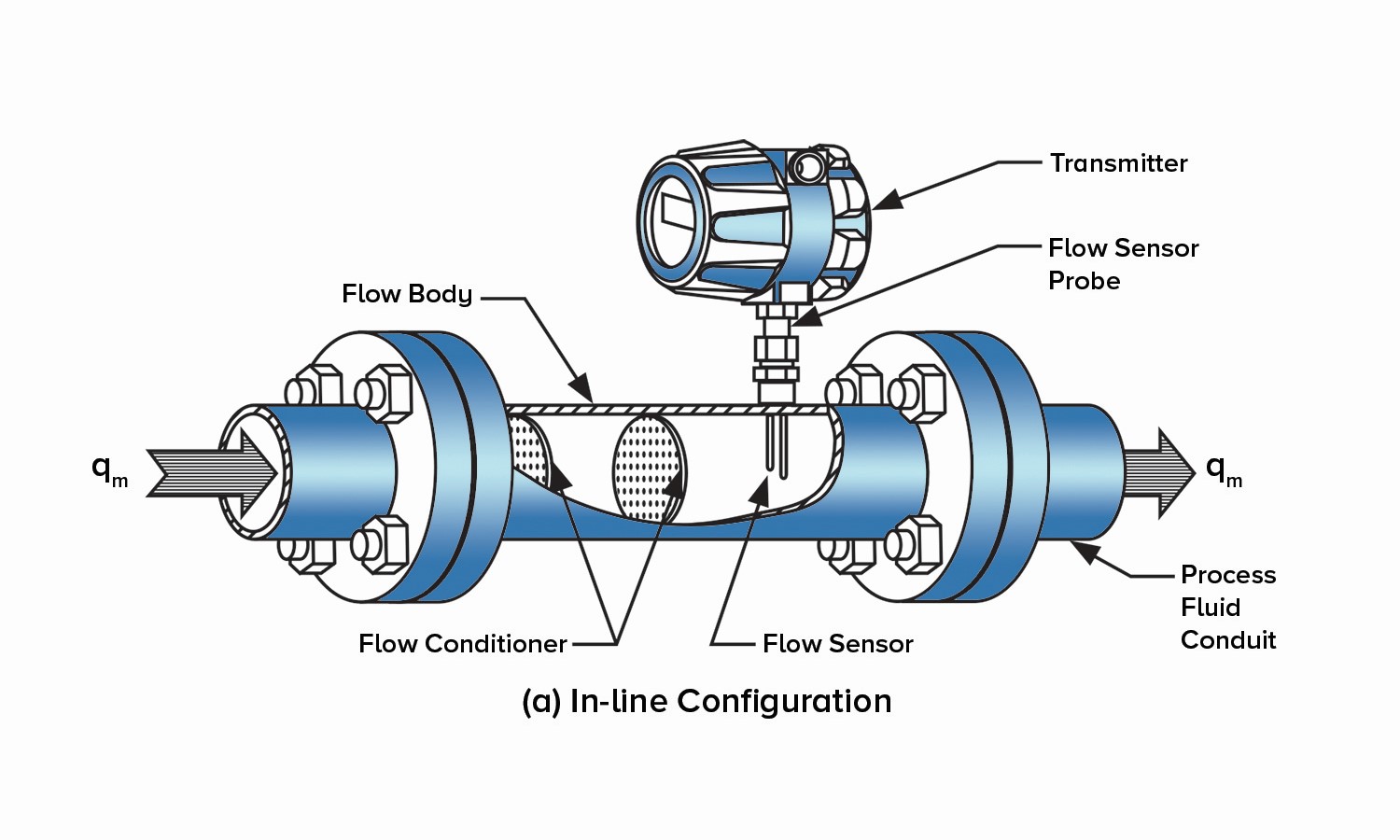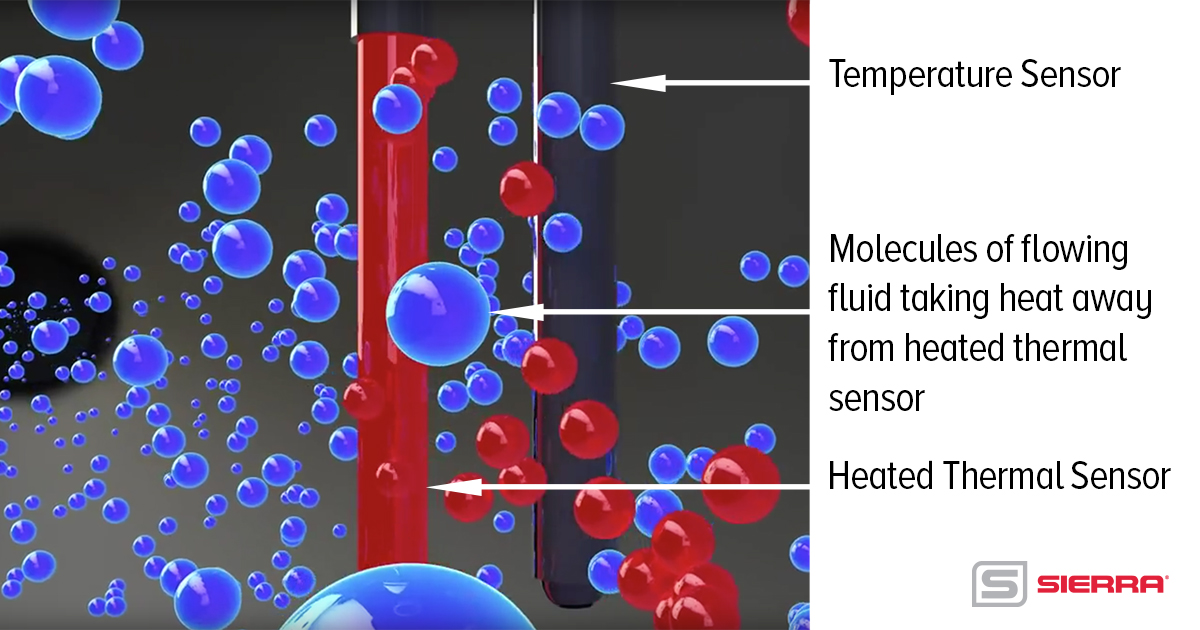
How Does a Thermal Flow Meter Work?

An insertion-type (immersible) thermal flow meter works by measuring the total mass flow rate of air/gas flowing through a pipe or duct. In a thermal flow meter’s simplest working configuration, gas flows past a heated velocity sensor and a temperature sensor. Instrument electronics work to maintain a constant temperature differential of 50 degrees Celsius between the actual gas temperature and the heated velocity sensor.
As the molecules of the gas flow past the heated velocity sensor, a cooling effect occurs as heat is transferred to the flowing gas molecules and carried away. The actual Watts required to maintain a constant 50 degree Celsius temperature differential between the two sensors is directly proportional to the mass flow rate of the gas. The amount of heat lost depends on the thermal properties of the gas and the flow rate of the gas.

Thermal Flow Meters:
- Work by using thermal heat energy transfer, at the molecular level, to calculate air/gas mass flow rate
- Measure mass flow rate without need for pressure and temperature compensation or flow computers
- Immersible thermal mass flow meters are the only other direct gas mass flow meter other than Coriolis.
- Contain a heated velocity sensor and a temperature sensor
- Flow past the heated velocity sensor, which cools it down as the actual gas molecules flowing by take heat away with them
- Use a cooling effect that is proportional to the velocity of the flowing gas and also a function of the thermal properties of the gas (the amount and rate at which the gas can transport heat)
- Allow for the mass flow rate of the gas to be determined by measuring the difference in temperature between the heated velocity and temperature sensor
- Measure Watts required to maintain a constant 50 degree Celsius temperature differential which is directly proportional to the mass flow rate of the gas

Other Factors
Many other factors will affect how well a thermal flow meter works, including:
- The thermal characteristics of the sensor materials
- How the thermal sensor is constructed
- The heat loss other than that being carried away by the gas flow
- The uniformity of the fluid flow in the pipe
For a full explanation of how this type of flow meter functions, watch Sierra’s video on how thermal mass flow meter technology works. You can also learn more in this white paper on the evolution of thermal mass flow meters from Sierra Founder Dr. John Olin.
 Go to Autotest Division >
Go to Autotest Division >